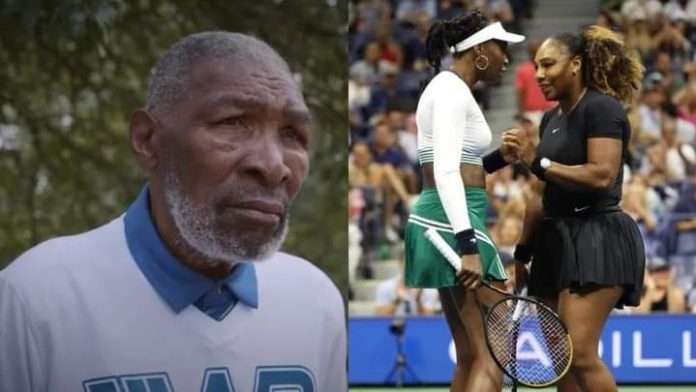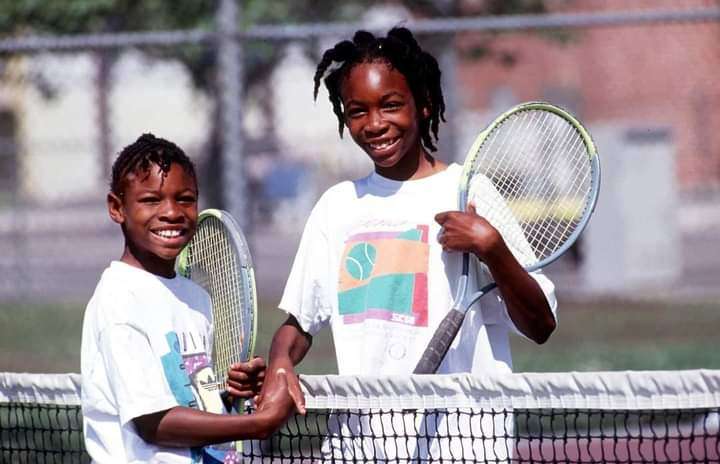In 1980, a man named Richard turned on his television and saw a female player from Romania receiving a check for $40,000 after winning a tennis tournament.
The whole scene was enough to shock Richard. This was more than his annual salary.
Within a few years, he would decide that his daughters would also play tennis.
After turning off the television, he sat down and wrote a 78-page document outlining a plan for his two young daughters to flee their hometown of Compton, California, an area known for notorious black gangster violence. Now there was also a problem in that Richard didn’t know anything about tennis, he didn’t have the money to pay for his daughters to train for this expensive sport, and maybe it’s incredible to you that his daughters weren’t even born yet at that time.
Over the next five years, he collected tennis-related magazines and video cassettes. He also taught himself to play tennis. Five years later, according to his plan, Richard had a tennis racquet in the hands of his two daughters, as well as the same magazines and videos and what he had learned from them. He was both the father and coach of these little girls and he began to teach them the game of tennis.
Unable to afford the basics of playing the game, Richard would go to local country clubs to collect used tennis balls from bins and load them into a shopping cart, so that his daughters could practice with these used balls on public tennis courts.
Richard was overprotective and physically strong as a father, and was often beaten by local gang bullies while trying to protect his daughters from harassment during tennis training.
On one occasion when he refused to leave the practice court with his daughters, they broke his nose, jaw and fingers, and knocked out several of his teeth.
Richard wrote in his diary, “After today, history will remember the ‘toothless’ man as a monument of courage.”
Since tennis was a predominantly white sport at the time, people would stare and shout at the black family as Richard and his daughters traveled to various tennis courts for junior tournaments. Once the girls asked, “Daddy, why do people stare at us so badly,” to which he replied, “Because they are not used to seeing such beautiful people before.”
The wheel of time turned quickly and the calendar page turned sharply to the year 2000, when a tall, lean black girl set out on a journey to play the Wimbledon tournament final, and thousands of miles away from her native ghetto, Richard watched his eldest daughter play in the grass fields in front of London’s elite, celebrities and royalty.
No one had ever seen a tennis player with such a powerful serve and fast footwork, nor had they ever heard shots so loud. It was like every ball was being beaten and every ball was crying out in pain.
When the girl reached a stage where victory was ahead of fear, the girl looked at her father standing in the stands who was encouraging her to achieve victory by shouting loudly. Richard always told his daughters, “One day, we’re going to win Wimbledon, and it’s not going to be for us. It will be for the helpless and poor people of America.” Richard’s 20-year-long struggle plan had now reached a critical point in history.
As the opponent’s ball hit the net, cameras caught a teary-eyed Richard dancing wildly as he watched his daughter, Venus Williams, win the first of her seven Grand Slam titles. Over the next several years, Richard also watched his youngest daughter, Serena, win 23 major tournaments and become one of the greatest tennis players of all time.
For all their success on the tennis court, what Venus and Serena endured off the court is the most impressive part of their journey. From spectators, who were given the nickname the “Williams Brothers” because of their physique, to comments in the media calling Serena’s mixed-race daughter “chocolate milk,” the two sisters’ resilient and kind personalities helped them stand up to racism and bigotry their father said. The best way to avenge is to answer with her racquet inside the tennis court. This inspiring struggle of these two sisters inspired black people and athletes around the world.


















